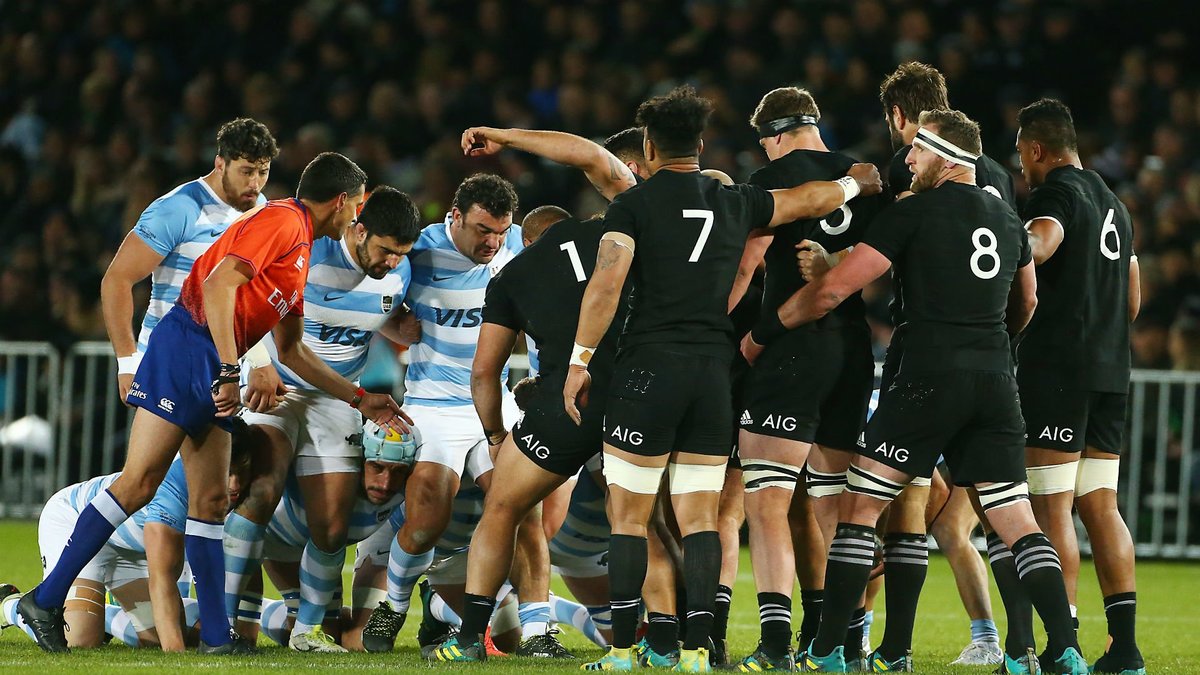Weak scrum? Poor kicking? All Blacks misconceptions quashed in data analysis

As the countdown moves from days to hours ahead of the highly-anticipated clash between England and New Zealand at Twickenham on Saturday, we attempt to erase three common misconceptions about the All Blacks.
Thanks to analysis of entries into the 22 and scoring by and against New Zealand over the last couple of years, provided to us by Simon Gleave of Gracenote Sports, we have been able to identify three myths around the number one side in the world that England will need to take note of if they are to have any chance of upsetting the odds on Saturday.
The analysis is based on the 23 most recent Test matches that New Zealand have played against the world’s top nine ranked sides, as well as the British and Irish Lions.
Set-piece dominance isn’t just lineout-based
Rightly, everyone rushes to pour adulation on New Zealand’s lineout, and with a unit generally consisting of the likes of Codie Taylor, Dane Coles, Brodie Retallick, Sam Whitelock and Kieran Read, that’s no surprise, but this idea that the All Blacks have a weak or easily attackable scrum is wide of the mark.
On entries into the 22 beginning with a scrum, New Zealand average 3.31 points, whilst possessions in the same area beginning with a lineout only average 3.07 points. Both figures explain why New Zealand regularly chose not to kick at goal, but the scrum has proven to be a more clinical facet of New Zealand’s game in the ‘redzone’ than their much-lauded lineout.
The scrum has the advantage of often being able to split the field and create space, so if a side is confident in their ability to quickly and cleanly win the ball, it makes sense to make it a focal point in your attacking game plan.
Continue reading below…
Watch: Eddie Jones previews England’s clash against New Zealand
Kicking woes exaggerated?
The critique on New Zealand and Beauden Barrett is that their kicking at goal is not as accurate as the other leading sides in the world and whilst that is true, the idea that it is an area where England will have a clear advantage on Saturday has been overplayed.
In Gracenote’s analysis of conversion kicking rates, something which they argue is a better measure of true kicking ability due to the fact every kick has to be taken and harder kicks cannot be declined, New Zealand have a success rate of 74.18%. Argentina, South Africa, France, Ireland and Wales may all sit above New Zealand in that table, but what about England?
Well, of the nine top ranked nations, England actually sit at the very bottom, with a success rate of just 70.42%. If you remove George Ford’s conversion attempts, so that it is just representative of Owen Farrell, who will be kicking for England on Saturday, the success rate does rise to 74.55%. It’s a number that is on par with New Zealand, but certainly not significantly higher or to be considered a clear advantage.
Less structure can be key
New Zealand are kings of creating more opportunities than their opposition. In the recent Rugby Championship, they averaged 9.2 entries into the 22 per game, the highest in the competition, and allowed just 5.8 per game in return, the least in the competition. One way in which New Zealand do seem to allow more entries into their 22, however, is through the return of kicks.
Again, another cliché is that to beat New Zealand you need to dominate the set-piece and keep the game structured, denying them the broken field situations that they are so composed at finishing off. However, 20.95% of entries into New Zealand’s 22 since 2017 have come as a result of a reception on a New Zealand kick and that’s a significant increase on the 12.04% of entries into the 22 that the All Blacks have managed in the same fashion.
Whether it is a combination of their kicking game being off the mark, their kick chasers not being quite in tune with the kickers or their ability to make one-on-one tackles on counter-attacking players, it is a more than viable way into the New Zealand 22. Given that you need to score tries to beat New Zealand, especially as they average over five tries per game, the only way to do that is by entering the 22 and the numbers show that a willingness to run the ball back at the All Blacks is beneficial in that goal.
Watch: Mark Wilson speaks ahead of the Test with the All Blacks on Saturday.



















































